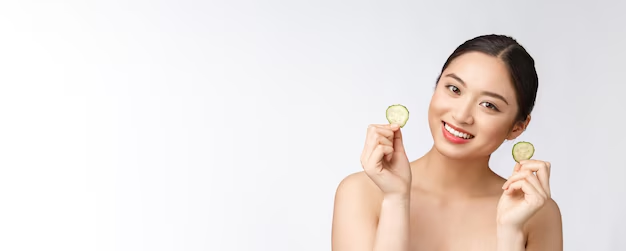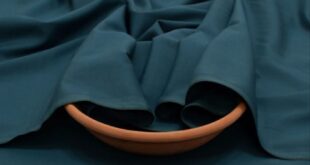The skincare routines emerging from Korea and Japan have attained global prominence, celebrated for their innovative methodologies and remarkable outcomes. However, the frequency with which one should adhere to these intricate regimens remains contingent upon various factors: skin type and individual objectives. Let us delve deeper into this subject. An understanding of both Korean and Japanese skin care routines reveals that they fundamentally center on nurturing of dermis through gentle, hydrating and efficacious practices. Although there exist certain commonalities, subtle distinctions are evident: Korean skin care routine (notably renowned for its multi-step approach, which can encompass up to 10 steps) emphasizes layering of lightweight products to achieve optimal hydration and luminous glow. In contrast, Japanese skin care typically adopts a more streamlined methodology (generally comprising 5-7 steps), prioritizing thorough cleansing and robust sun protection, because the overarching aim is cultivating a smooth, porcelain-like complexion.
Daily Essentials
Specific measures in both routines ought (to) be adhered to daily for maintenance of healthy, radiant skin. These encompass: cleansing (morning and night): both routines underscore double cleansing during evening, aimed at eliminating makeup, sunscreen and impurities. In morning, gentle cleanser suffices. Toning: it prepares skin to absorb subsequent products. Moisturizing: this keeps skin hydrated and prevents dryness. Sunscreen (morning): essential for safeguarding skin from harmful UV rays. However, the efficacy of each step may vary, but (one must) remain diligent in their application. Because routines can become monotonous, individuals often find themselves neglecting certain aspects, although consistency is crucial.
Weekly Add-Ons
Certain procedures may be executed with reduced frequency, contingent upon specific requirements of one’s dermis (skin); exfoliation (1-3 times per week): this process eliminates dead epidermal cells and fosters cellular turnover. One should opt for gentle exfoliants, because they mitigate risk of irritation. Sheet masks (1-3 times per week): these have become cornerstone of Korean skincare regimens; they deliver immediate surge of hydration and nourishment. Deep-cleansing masks (once a week): favored in Japanese practices, these masks assist in purifying pores and revitalizing skin.
Tailoring Your Routine
Skin Type:
Oily Skin: Focus on lightweight, oil-controlling products (which can be beneficial) and exfoliate more frequently—up to 3 times a week. Dry Skin: Prioritize hydration because using rich, nourishing products is essential; limit exfoliation to once a week, however. Sensitive Skin: Opt for fragrance-free and hypoallergenic products, although it is prudent to introduce new steps gradually to avoid irritation.
Lifestyle:
A simplified regimen (cleanse, tone, moisturize and sunscreen) functions effectively for busy mornings; however, one should dedicate additional time to a comprehensive routine during weekends or self-care evenings (this is paramount). Although the efficiency of such a routine is notable, its limitations become apparent when one considers the intricacies of skin health. Therefore, because individuals often find themselves pressed for time, it is essential to recognize the significance of a more thorough approach (especially during weekends).
Skin Concerns:
When addressing particular concerns, it is advisable to incorporate targeted treatments: serums, essences, or ampoules—as suggested by your dermatologist. However, one must consider unique needs of their skin; this personalization is crucial. Although these products can be effective, results may vary because individual skin types respond differently. Thus, consulting a professional is essential for optimal outcomes.
Consistency Is Key
Whether you opt for Korean or Japanese routine, consistency is paramount. A well-maintained routine not only enhances skin health; however, it also mitigates future complications. It is essential to recognize that overdoing certain steps—such as exfoliation—can damage your skin barrier. Balance is everything (because it ensures optimal results); this is crucial.
Korean Skincare Philosophy
These Korean skin care routine (1) emphasizes hydration, aiming to achieve a glass-skin glow; it layers lightweight products. Although it underscores a multi-step routine, preventive care is paramount (because) gentle ingredients are essential to maintain youthful and healthy skin. However, this approach requires diligence and consistent application.
Japanese Skincare Philosophy
Japanese skin care prioritizes simplicity, natural ingredients and the achievement of mochi-hada (soft, plump skin). It often incorporates traditional techniques (which are essential) and luxurious textures, focusing on cleansing, nourishing and protecting the skin. However, this approach is not merely superficial; it reflects a profound understanding of the skin’s needs (as well as the cultural significance of beauty). Although many Western regimes emphasize complexity and variety, Japanese skin care routine maintain that less is more because they allow for deeper engagement with the skin’s intrinsic qualities. This philosophy underscores a holistic perspective on beauty, where the aim is not just appearance but overall well-being.
Final Thoughts
The frequency of adhering to (either) Korean or Japanese skin care routine hinges on your skin’s specific needs and lifestyle choices. Begin with fundamental routine; subsequently, you may integrate further steps as necessary. With patience and diligence, you can attain the radiant, healthy complexion these regimens (often) promise. However, this process requires commitment. Although results may vary, because individual skin types differ, the potential for transformation remains significant.
 Crypto trade Online Unlock the Future of Finance Today.
Crypto trade Online Unlock the Future of Finance Today.




